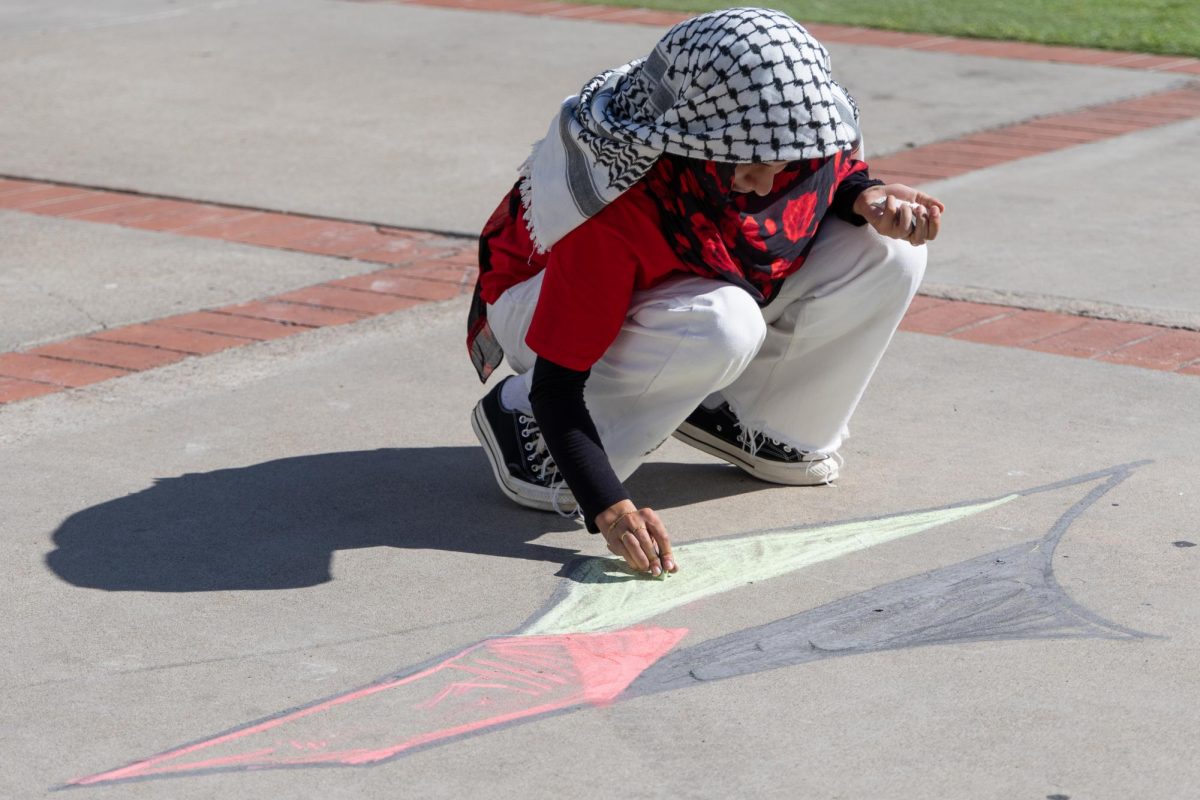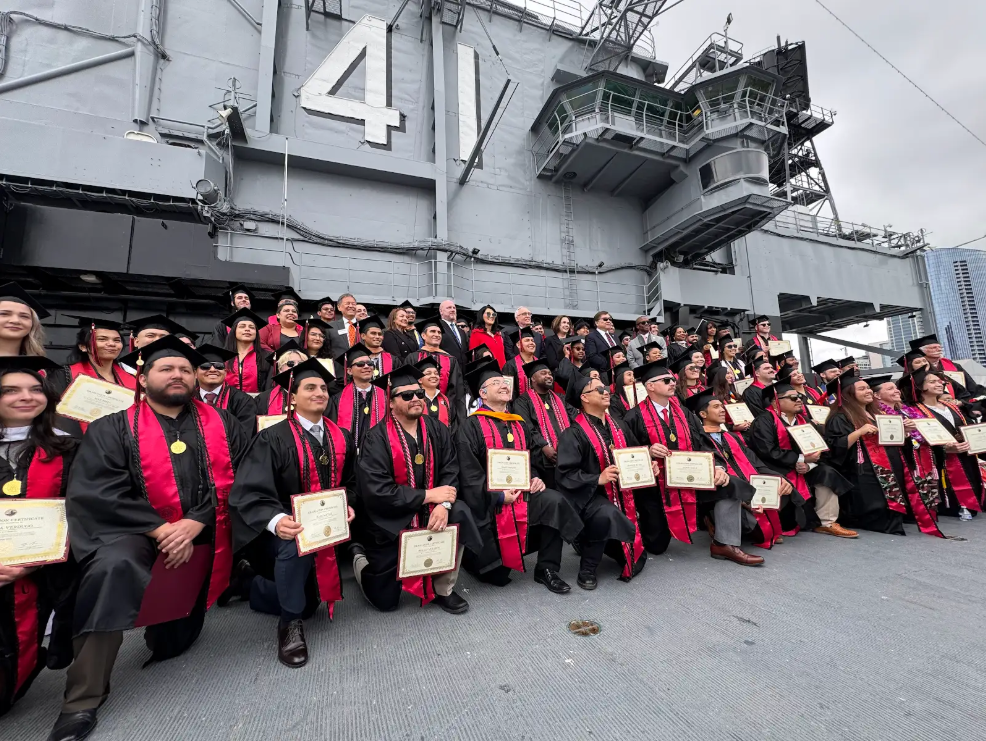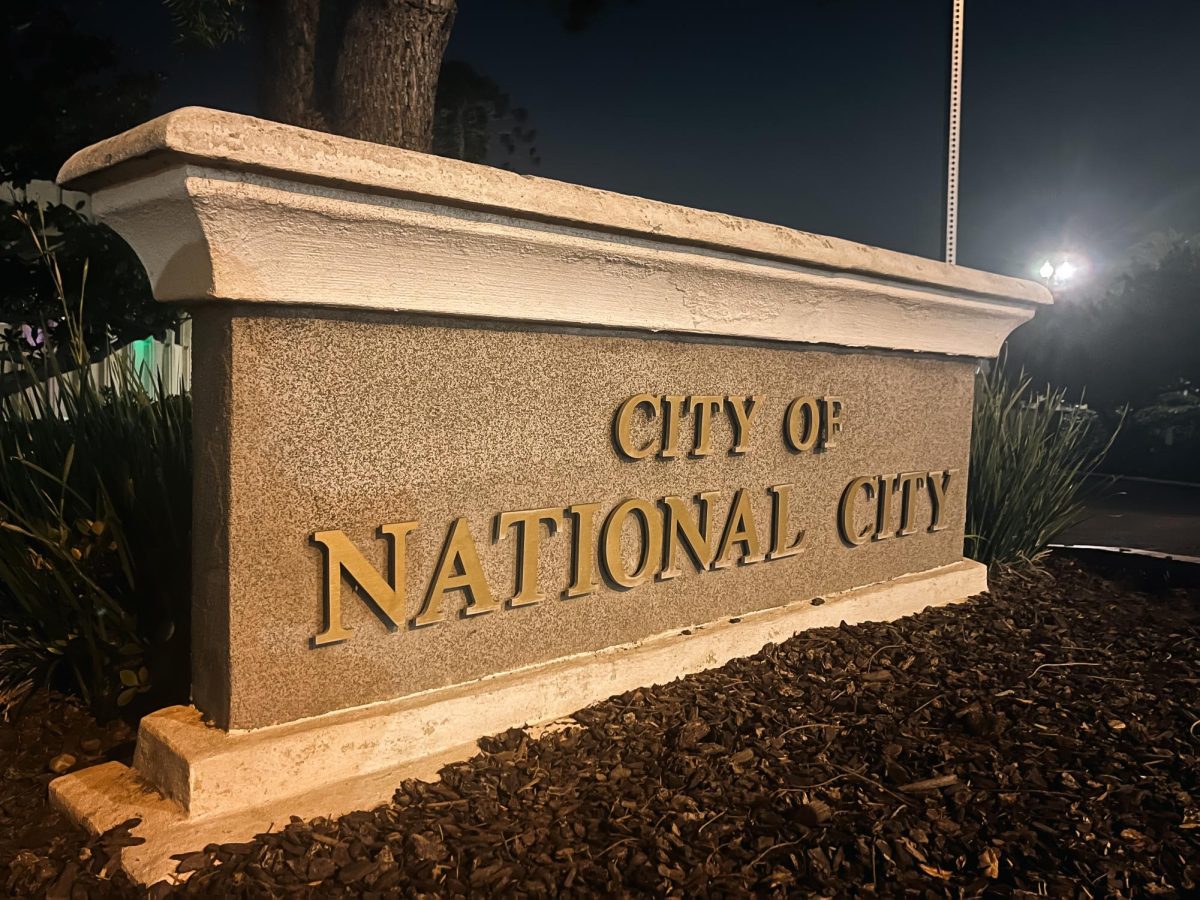
Student members of San Diego State cultural organizations and the Resi- dence Hall Association demonstrated against Associated Students’ governmental restructure at last week’s A.S. Council meeting by wearing red duct tape on top of their mouths. “No one on here wants to silence anybody,” A.S. Executive Vice Presi- dent and Chief Operations Officer Channelle McNutt said. “We need to find a more cohesive way for our organization and for our community to collaborate. The fact that I have people here that have tapes on their mouths breaks my heart.” During the assembly, the A.S. Council approved a proposed mod- el for its governmental restructure through a majority vote—eliminat- ing individual votes for cultural or- ganizations.
“Their vote is being removed and there is no sugarcoating that,” former member of the restructur- ing committee Cord Claffey said. The current structure allows cultural organizations to sit on coun- cil, giving each sitting representative one vote. The approved restructure model, which will be implemented once it is finished, combines the cul- tural representation in A.S. into what the restructuring committee called the Student Diversity Commission. “There are so many concerns,” Asso- ciation of Chicana Activists represen- tative Janel Martinez said. “I’m just worried. How is it that we are voting on this and there are so many things that could be fixed before voting?” With the new structure, the cultural organizations represented on A.S. will share one representative seat on coun- cil, with one counting vote for all. Claffey explained the shift in power is meant to pre- vent multiple representations. “Every student is represented by their College Council,” Claffey said. “A student who belongs to a represented organization on A.S. Council is being represented twice.” In the current and in the proposed structure, each college council re- ceives one representative and the rep- resentative’s vote based on the num- ber of students enrolled in the college. For example, the College of Business Administration serves approximately 4,000 students and is therefore repre- sented by three council members and holds three votes. Claffey said for ev- ery 1,500 students, a representative is added.
Student representatives were able to voice their opinion during the public meeting.
“I ask the representative of the Col- lege of Science ‘Are you ready to represent me as an African-American woman?’” psychology senior and former RHS representative Jasmine Henderson said during the meeting.
After comments from members of Movimiento Estudiantil Chicano de Aztlan, Andres Bonifacio Samahan and RHA pledging for council members to reconsider their stance, A.S. executives and other council members encouraged the demonstrators to run for the multiple seats avail- able in the College Councils.
“I, in my three years here, have never been more offended,” former Professional Studies and Fine Arts college representative Kristin Sword said. “The fact that people feel like their culture and their organizations are some- thing that can’t be shared with my campus culture makes me sad.” Restructuring was passed with 27 votes, seven oppositions and three abstaining. Reasoning for restructure, which is posted online on the A.S. web- site, says the new model will make the council more efficient. “Everything will ultimately depend on the people,” Claffey said. “If they’re good, it’ll work.”






